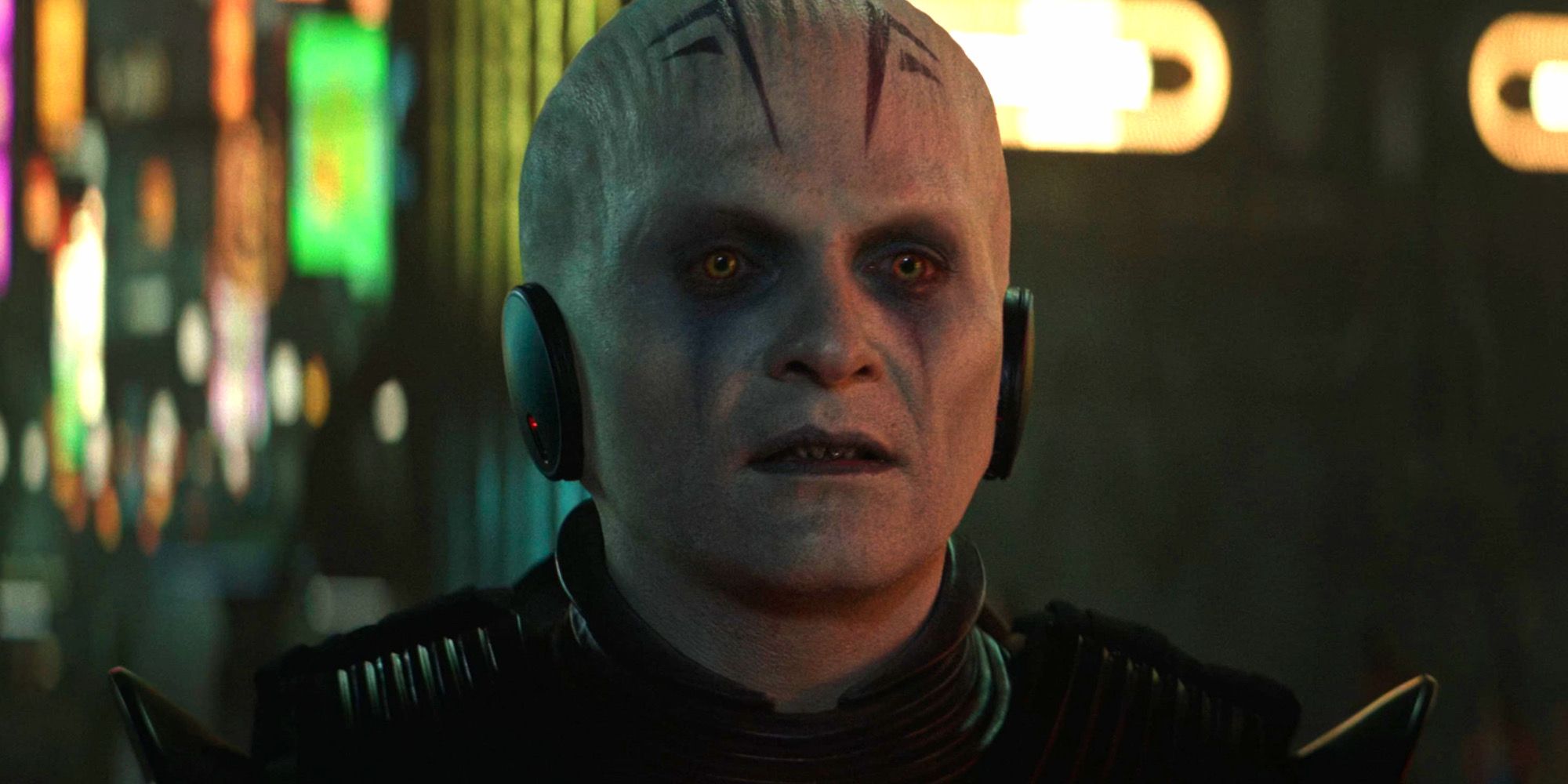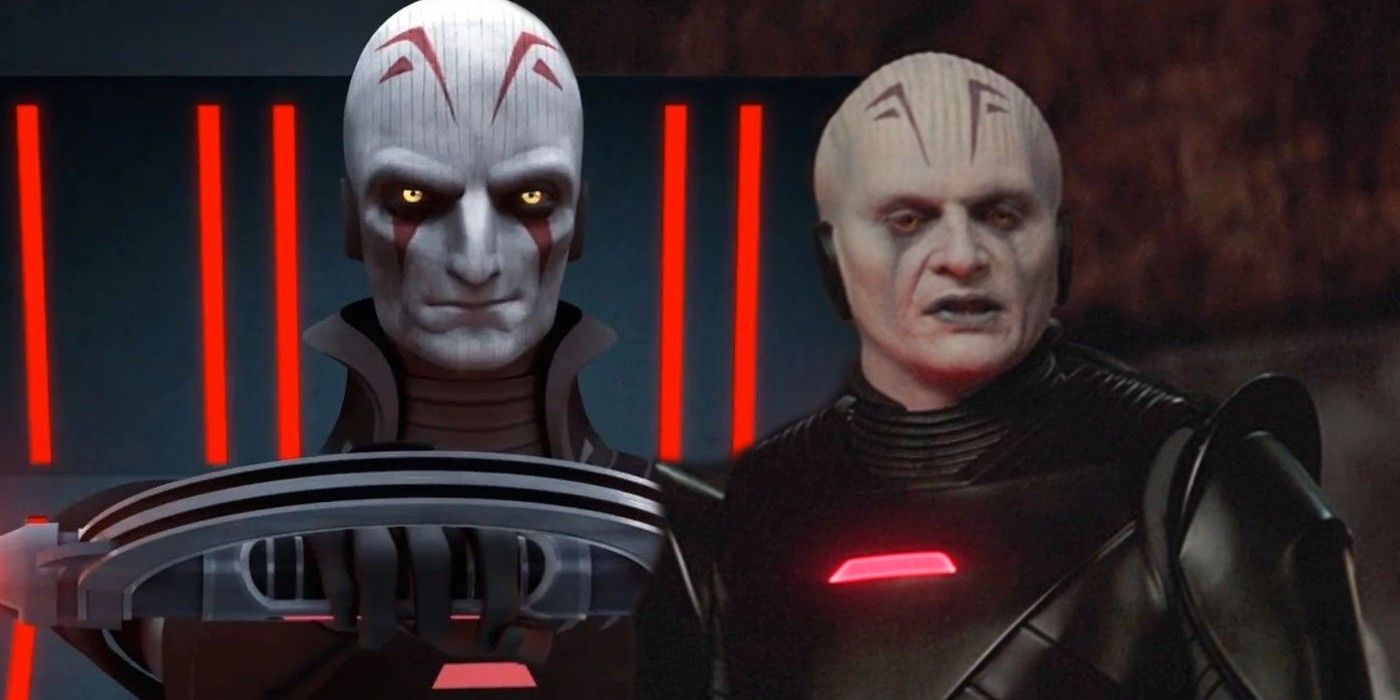Grand Inquisitor Kenobi Design Explained by Clone Wars Creator's Advice

Dave Filoni, creator of Star Wars: The Clone Wars and Star Wars Rebels, had advice for Obi-Wan Kenobi's design team that likely influenced the live-action design of the Grand Inquisitor. The latest live-action Star Wars series saw the return of Ewan McGregor as the famous Jedi for a story of self-forgiveness and rediscovery. In addition to McGregor, Hayden Christensen also returned as Darth Vader/Anakin Skywalker, but the duo were joined by a cast full of new additions to the Star Wars galaxy—especially the live-action debut of Vader's team of Force-sensitive, Jedi-hunting Inquisitors.
At the head of this team is the Grand Inquisitor, a character who made the leap from animation to live-action in Obi-Wan Kenobi thanks to the help of actor Rupert Friend. The Grand Inquisitor's transition into live-action was going to be a challenge from the start due to the nature of his Pau'an species, from his sharp teeth and glowing orange-yellow eyes to the lines and markings on his long forehead. The result in Obi-Wan Kenobi was met with a rather poor reception at first, but grew on some viewers to ultimately end up with mixed reviews. There's no denying Friend's incredible performance as the lead Inquisitor, though, something which helped with a design that was unable to be as exaggerated as it is in animation.
Now, Filoni's advice offers some insight into why Obi Wan Kenobi's Grand Inquisitor design looks the way it does. The Clone Wars creator's words were shared by Lucasfilm propmaster Brad Elliott on the official Star Wars website in a piece about translating the Inquisitors' iconic lightsabers from animation to live-action. Elliot reveals Filoni had advice for the team designing the double-bladed and spinning lightsaber hilts, suggesting they think about the animated designs as being exaggerated takes on a live-action version. Doing this freed the his team up to create weapons that looked proportional for human hands, Elliott explained, rather than solely serving an animated aesthetic. You can read Filoni's advice to Obi-Wan Kenobi's designers, below:
"Imagine the live-action came first, and that the animated material was an exaggerated version of the live action."

While Filoni's words served the props team specifically, the sentiment was no doubt shared again with those in charge of the Grand Inquisitor's overall design for his live-action debut. As Filoni stated, many things in animation are exaggerated, and the animation style for The Clone Wars is no different. This is the nature of the animated medium as compared to live-action, the latter of which prefers proportions and details that make sense to people's every day reality. Thus, Filoni's advice explains why the Grand Inquisitor has a smaller head design and a less prominent streaking of red underneath his eyes. It would not only be more practical for the design team and the actor himself, but it would also make the exaggerated animation style appear as if it was informed by the live-action rather than vice versa.
Obi-Wan Kenobi season 2 has yet to be announced, which leaves future appearances of the Grand Inquisitor in live-action up in the air for now. The series has been advertised as limited to one season, but interest shared by McGregor and Christensen for more Obi-Wan and Vader/Anakin stories seems to make the idea of a season 2 possible. Lucasfilm themselves have left the door open for such an opportunity, though official confirmation is still yet to come. Series director Deborah Chow and composer Natalie Holt, however, have each expressed doubt at the series being continued, instead insisting the story's been completed. Still, the idea of hope is at the core of Obi-Wan Kenobi, which means viewers can continue looking out for any news of another installment.
Source: Star Wars
from ScreenRant - Feed https://ift.tt/s1muLtQ
via Whole story

Post a Comment